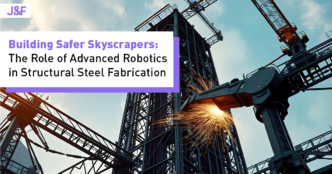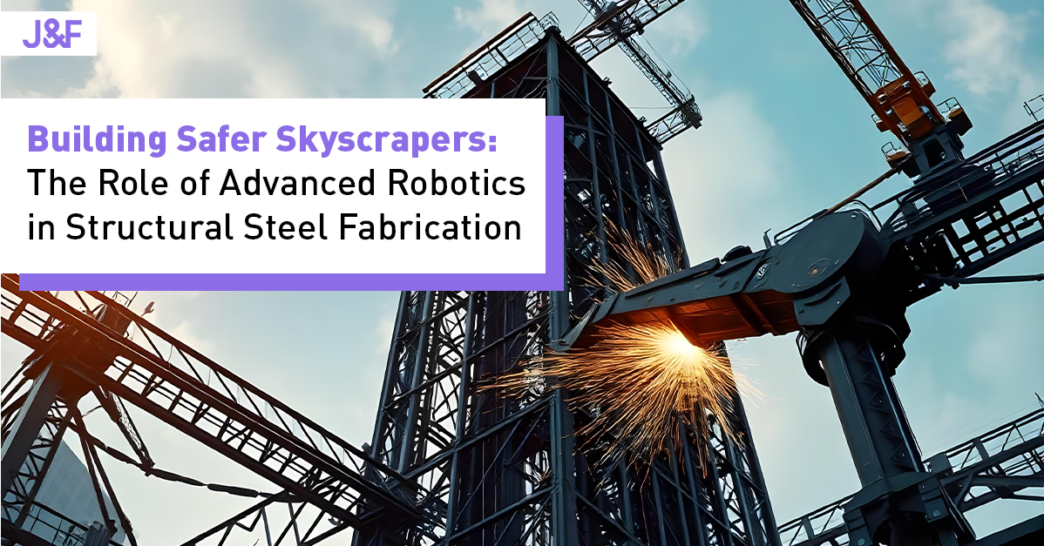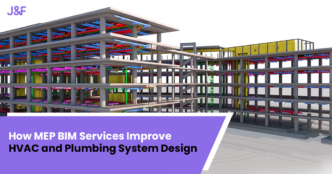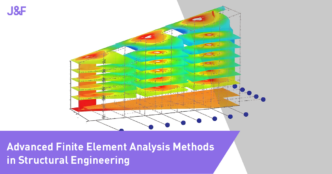The construction industry has come a long way since the advent of modern technologies. The evolution of robotics has taken project quality and precision to the next level, ensuring robust and reliable construction. Robotics is great at making precise cuts and welding while staying aligned with strict engineering specifications.
Compared to traditional practices, which are inherently taxing and costly, the modern fabrication process leverages robotics for prompt and ultra-precise outcomes. In construction, the robot has proved to be a game-changer, allowing for expedited cuts and welds as and when required. This article explores the role of advanced robotics in structural steel fabrication.
Significance of Structural Steel Fabrication in Construction
The reliability of any construction project heavily relies on various factors, including concrete quality, design, use of steel structures, etc. How these steel structures are cut, welded, and assembled decides how robust or long-lasting the project will be. The better the fabrication, the better the building’s robustness and stability.
Fabrication of steel structures and components is a laborious task. It seeks a skillful approach and adherence to basic engineering concepts. Any flaw could significantly impact the structural integrity of the building, diminishing the scope of future expansion. Thus, it is paramount to have an ideal structural steel fabrication from the ground up.
How Robotics Transforms Structural Steel Fabrication?
1. Enhanced Precision
Robotic systems are programmed to deliver super-accurate cuts and welds while adhering to stringent engineering specifications. Robotic systems are all about accuracy and precision. In fabrication, they can overcome potential issues like misalignment that could hamper the project’s stability.
For instance, advanced Computer Numerical Control (CNC) machines are programmed to ensure precise cuts for steel beams, reducing errors and ensuring hassle-free assembly.
2. Increased Efficiency
Automation in structural steel fabrication reduces menial errors and repetitive tasks, ensuring prompt and precise execution from start to finish. Unlike humans, robots can stay agile and super-accurate for hours, delivering pinpoint results without deviation or error. This could be a game-changing factor for projects where delays can lead to considerable capital losses and logistical challenges.
3. Improved Safety Standards
Traditional fabrication methods can take a major toll on the workers’ health and safety due to high temperatures and dangerous materials. Robotics overcomes such hurdles by automating tedious activities like welding, cutting, and material handling. Robotics in structural steel fabrication can mitigate safety concerns and ensure compliance with workplace norms, reinforcing a safer environment for workers.
Revolutionize Your Projects with Robotics – Achieve precision, efficiency, and utmost safety in structural steel fabrication.
Applications of Advanced Robotics in Structural Steel Fabrication
1. Robotic Welding
Welding is the backbone of steel fabrication, as it ensures robust joints between different steel components. Unlike human welders, who can commit mistakes, robotics are deadly accurate with welding endeavors, ensuring high-quality joints that boost the structural integrity of the steel structures.
2. Automated Cutting Systems
Sprawling townships and towering projects boast countless steel components that add to their stability and structural integrity. These components have several joints and cuts purposefully created for a robust structure. Creating these components requires skilled welders and significant time, which can be an issue for projects encountering time and budget constraints. Robotic lasers and plasma cutters can serve as a boon for such projects, delivering ultra-precise outcomes without denting the time management.
3. Material Handling and Assembly
Material handling and assembly are among the biggest obstacles at the construction site. These tasks are labor-intensive and consume a lot of time, contributing to poor project efficacy and budget spikes. Robotics has emerged as a viable solution to this fundamental problem. By using automated cranes and arms, robotics can serve such endeavors with ultimate accuracy and precision without denting time management, leading to swift project execution.
4. Quality Inspection
Robotics embraces a range of sensors capable of doing different jobs, including material inspection for defects. By leveraging advanced spectrometers, advanced robotics can accurately examine the steel component for structural integrity and quality, ensuring the final assembly is defect-free.
Benefits of Robotics in Structural Fabrication
1. Cost Savings
Although procuring advanced robotics may seem expensive, the long-term benefits outweigh the costs. Automation gets rid of labor expenses, material wastage, and time constraints, leading to quality outcomes and considerable savings.
2. Scalability
As urbanization expands with time, the demand for sprawling townships and projects is expected to grow. Robotics empowers fabrication units to ramp up their operation seamlessly, adhering to industry demands without denting quality or timelines.
3. Environmental Sustainability
Advanced robotics effectively curb material waste and energy consumption, paving a foundation for sustainable construction. This aligns with the global initiative for environmentally friendly construction devices, making robotics an essential component of green building practices.
Challenges in Adopting Robotics in Steel Fabrication
Despite countless pros, the dependence on robotics presents stakeholders with various pitfalls, such as:
1. High Initial Costs
Setting up robotic systems can attract a substantial amount of money, which might be an issue for budget-conscious developers and stakeholders.
2. Skilled Workforce
Operating and maintaining robotic systems is not a run-of-the-mill activity; it requires specialized skills and apt training. Companies must procure a considerable budget to train workers before they use these systems to their full potential.
3. Integration with Existing Systems
Many fabrication facilities embrace conventional methods, and the decision to adopt robotics can feel like biting a bullet unless the required resources are available.
The Future of Robotics in Structural Steel Fabrication
Robotic systems have limitless potential in terms of what they can achieve. Several sectors, including automobiles and manufacturing, are increasingly using robotics to achieve the ultimate precision and overcome menial errors.
The construction sector is now recognizing the prowess of these systems and thus adopting them gradually to achieve greater results. The future of robotics in structural fabrication seems promising. Below is the breakdown of some trends that reflect why robotics is a need of the hour.
1. Artificial Intelligence (AI) Integration
The use of AI in robotics can unearth new opportunities to improve production quality and time management. Based on the varied workload and workplace complexities, AI-powered robotics systems can adjust their output accordingly, ensuring uninterrupted workflow.
2. Modular Construction
Robotics can transform modular construction techniques, producing high-quality prefabricated steel components for seamless construction, leading to reduced on-site construction time.
3. Digital Twin Technology
By combining digital twin models with robotics, engineers can stimulate and streamline fabrication processes before execution, ensuring improved accuracy and efficiency.
Conclusion
The rise of robotics in structural steel fabrication can take the construction sector into a new era of possibilities. By automating critical processes, robotics can play an instrumental role in elevating the quality of construction without taking a toll on budget and time, paving the way for the skyscrapers of tomorrow.







